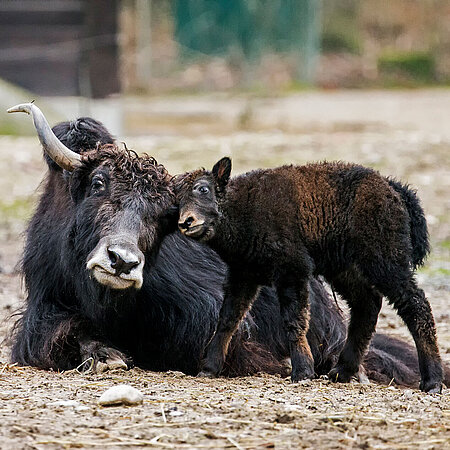Domestic Yak
Bos mutus grunniens

- Family
- Bovids (Bovidae)
- Weight
- ♀ 250 – 280 kg, ♂ 300 – 400 kg
Shaggy hair, humped shoulders
Yaks have long, shaggy hair to protect them against the cold. For added protection, the tail is also completely covered with long guard hairs. At signs of danger, they raise the tail and whip it back and forth. Other impressive features include the powerful humped shoulders and the “handlebar” horns that sweep out and up from the sides of the head, which are found on most domestic yaks.
Important source of fuel
Domestic yaks grunt rather than moo, hence the Latin name “Bos mutus grunniens” meaning “silent grunting ox”. They play a vital role in Tibetan highland agriculture, providing its people with milk, meat, wool and leather. Their dried manure is an important source of fuel on the Tibetan Plateau where there are no trees. Domestic yak also serve as pack animals transporting goods across the mountain passes.
Domestic yaks can tolerate temperatures as low as minus 45 degrees. In such conditions they reduce their respiratory rate and therefore only lose little heat through breathing.
Distribution
